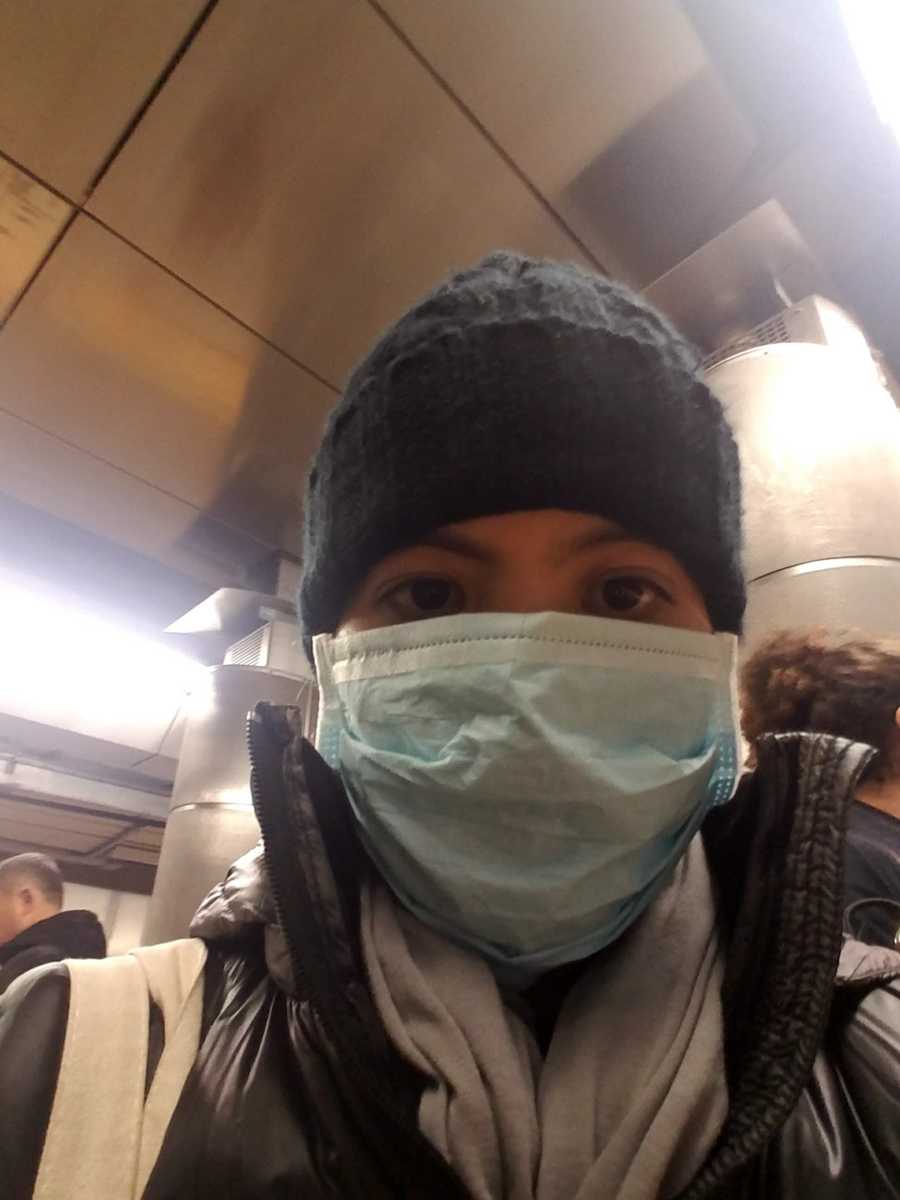“The first time I heard about lupus, I was probably in my mid-twenties. Selena Gomez was on the news and talking about her new diagnosis. But I didn’t think much about it. Why should I? I didn’t have it and life went on.
Fast forward to the start of 2017. It was a new year and I felt like this was going to be my year. I really loved my job for the first time in forever and I was dating a really awesome guy. I felt like I was on cloud nine and things were falling into place.
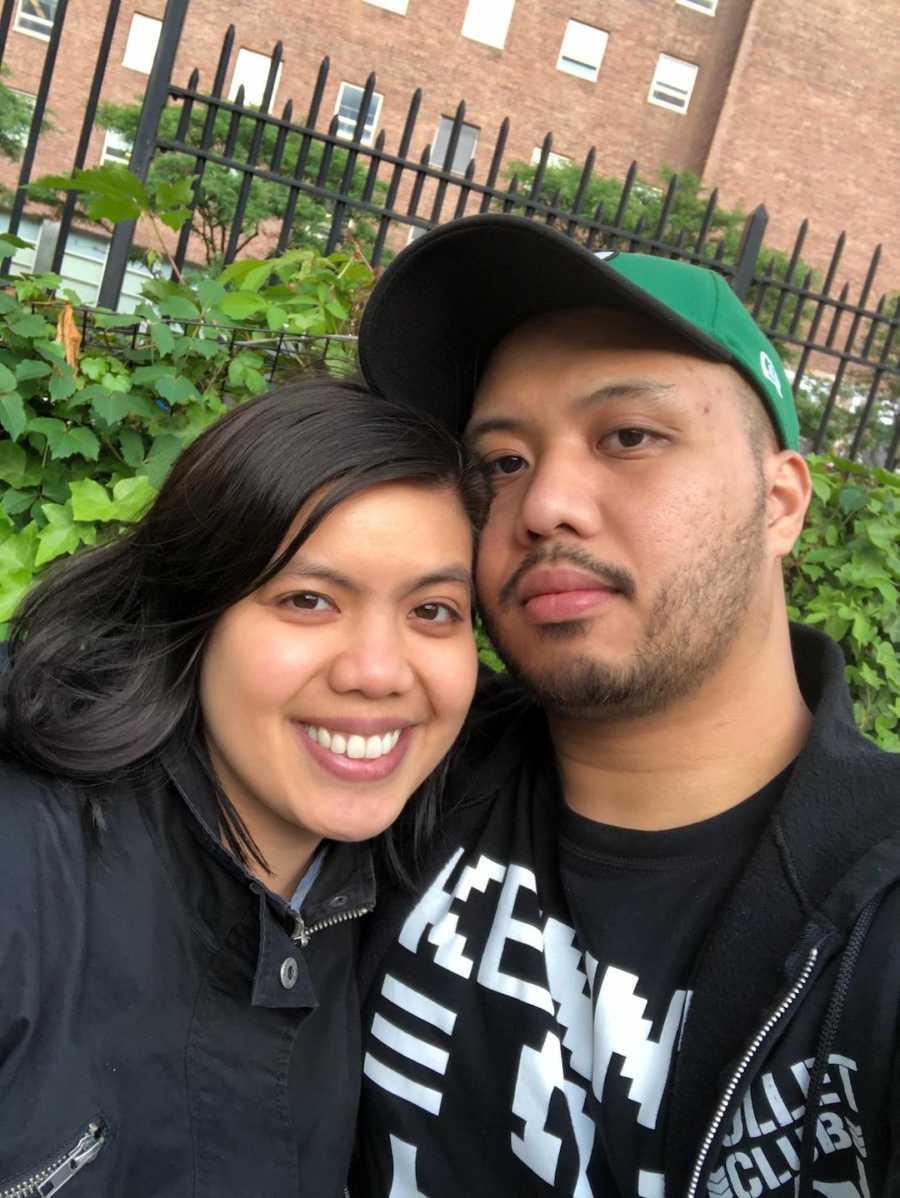
A few days after Valentine’s Day, I noticed when I got out of bed, there was this radiating body ache. It was the type of body ache you would feel after a long workout. But I didn’t work out the night before. I was confused as to what I was feeling. I also started to notice morning stiffness in my joints that would linger. My ankles were also aching on another level and I was in pain with every step I took. I convinced myself it was part of getting old and I sort of shrugged it off. Maybe I slept on my side wrong. Maybe I just needed to stretch.
I also was super fatigued. I always just wanted to close my eyes and just rest. I kept thinking of excuses and thought, ‘I’m just out of shape.’ I just needed to get that 8 hours of sleep. I’m 27, what could possibly be wrong with me? So, I endured the pain and kept thinking this was going to go away. It had to. I kept telling myself it was nothing.

I also never told anyone what I was feeling in the beginning. It was a mix of emotions of denial and disbelief. I wanted to pretend this was normal and I was going to be fine. A few months went by and soon the joint pain became unbearable. I couldn’t open doorknobs. I couldn’t do my makeup. I couldn’t even write my name or point without feeling so much pain. I also noticed random bruises on my body that came out of nowhere. Walking up and down the stairs was even a bigger struggle. Living in NYC, one of the most fast-paced cities in the world, did not help. I got so many stares and furious people barking at me saying why I was so slow. At one point, an elderly couple with canes bypassed me. On the outside, I looked like a normal healthy 27-year-old but I was feeling so much pain on the inside.
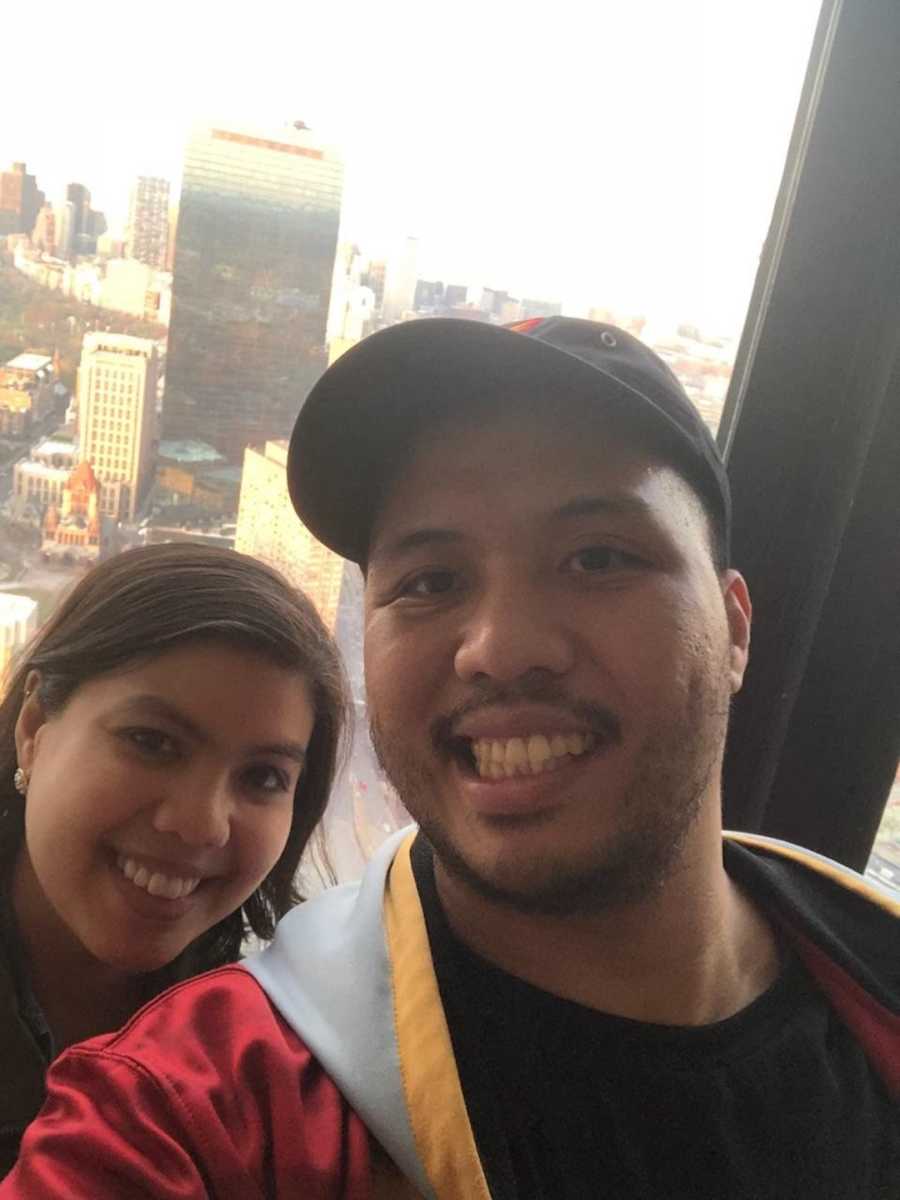
In June 2017, I made an appointment with my PCP. I described my pain and she ran some blood work. Everything came back normal and she told me to stretch and exercise more. If the pain got worse, take some Tylenol. I was a little frustrated but didn’t know what else to do and left. A few weeks later, things got worse. I wasn’t able to lie down and sleep properly without feeling a super sharp pain in my chest. Sleeping was a struggle and I started sleeping on the couch propped up with pillows. I no longer was able to walk a block without gasping for air. My legs and feet then became so swollen my ankles disappeared. My family and boyfriend were super worried and we all began researching online on what it could be. But that just made me stress out more. I was thankful for that support system. Without them, I don’t know how I would have been able to handle all this.
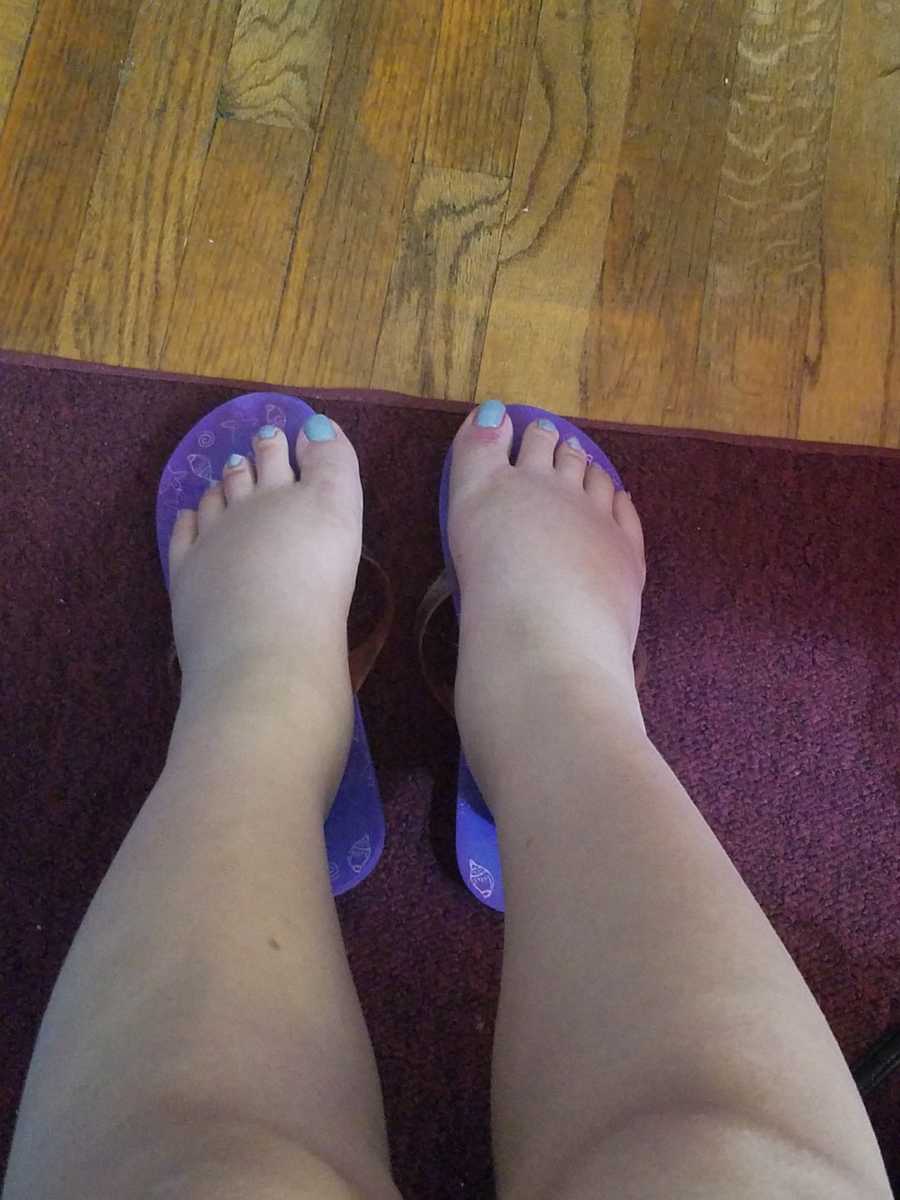
I went back to my PCP and demanded she ran more tests because this was not normal. My symptoms were now clearly visible and exercise and Tylenol were not going to help. She prescribed me Lasix and thought that would help reduce the swelling. But that didn’t help. She also scheduled an ultrasound of my leg to rule out a blood clot. Thankfully, there was no blood clot but my legs were still super swollen. I no longer was able to fit into any of my shoes. Thankfully, it was summer and I was able to wear flip flops.
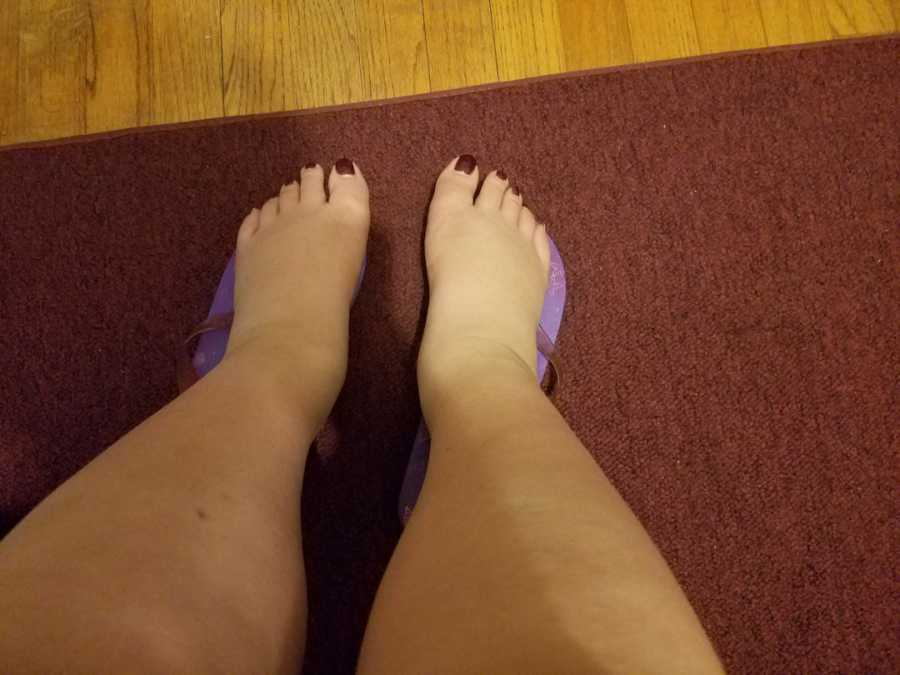
I told my PCP to schedule me whatever tests and whoever because I wanted to get to the bottom of this. As a patient, I had to advocate for myself. I knew something wasn’t right and I should have been more adamant in the first appointment. Each day, my symptoms kept getting worse. Soon I was seeing a nephrologist, hematologist, and rheumatologist. I go to a small clinic so all the doctors are in one place, which made this easier. When I saw them, I already knew my history and I was doing more blood work and getting ultrasounds, MRIs, CT scans, x-rays.
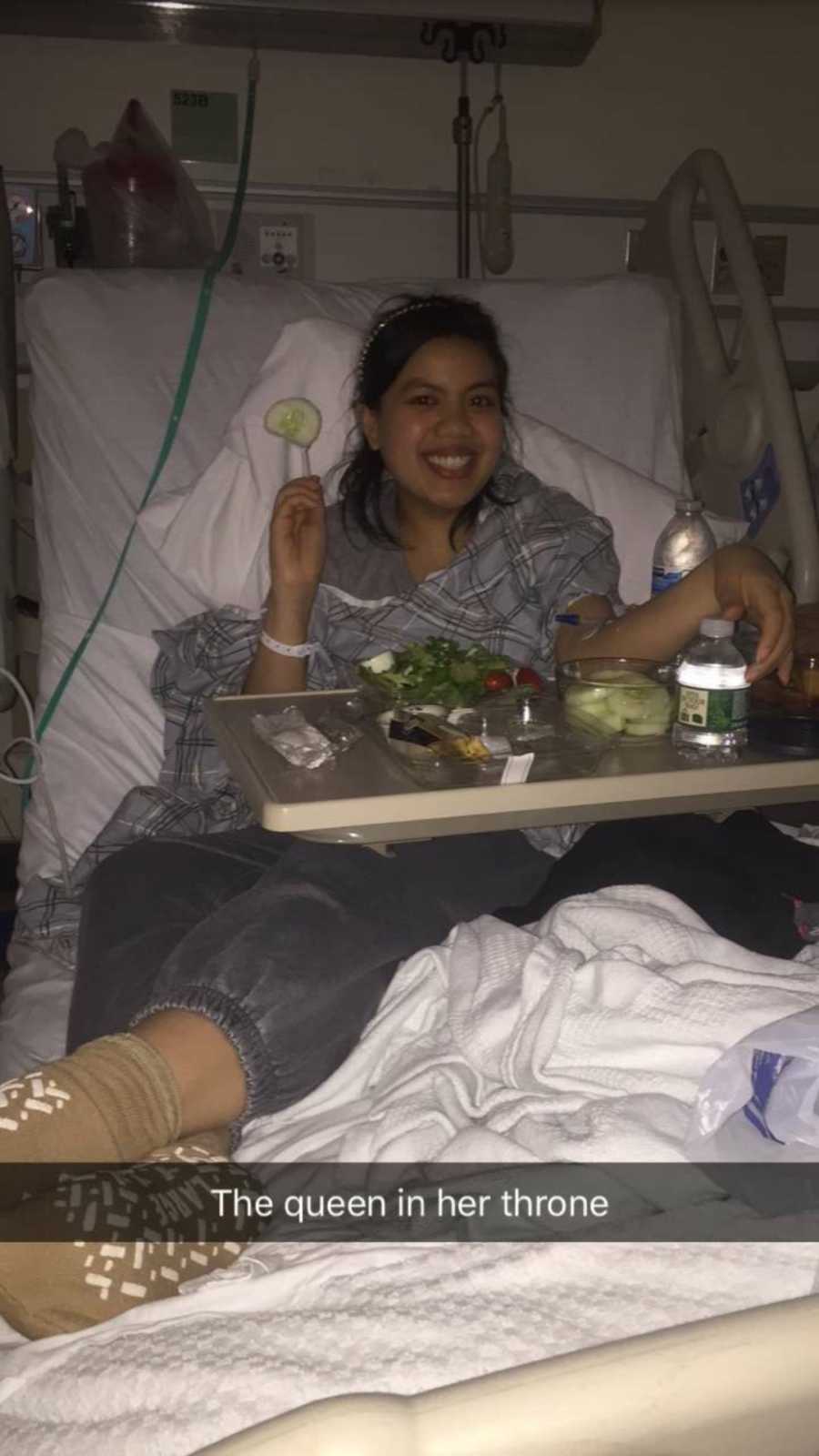
After all the lab work and scans, I got my diagnosis. They had informed me it was lupus. They tried to explain as simply as possible. My body was attacking itself. My immune system couldn’t decipher the good or the bad cells. So far, it was attacking my heart, my lungs, and my kidneys. I remember crying in the doctor’s office when she told me. I didn’t want to accept it. I was in denial and saw two more rheumatologists. I made them run the same tests again hoping for a different outcome. But it was the same result. No one in my family had any autoimmune diseases.
I kept thinking, ‘Why me? What did I do to deserve this?’ I was only 27 and this was supposed to be my year. I didn’t want to be the ‘sick’ girl. I didn’t want to be a burden to my loved ones. I didn’t want them to constantly worry about me. It took a few months for me to finally come to terms and accept my diagnosis. I was grateful for the support that my family and my boyfriend-turned-fiance and friends gave, and without them, I don’t know how I would have handled all this.
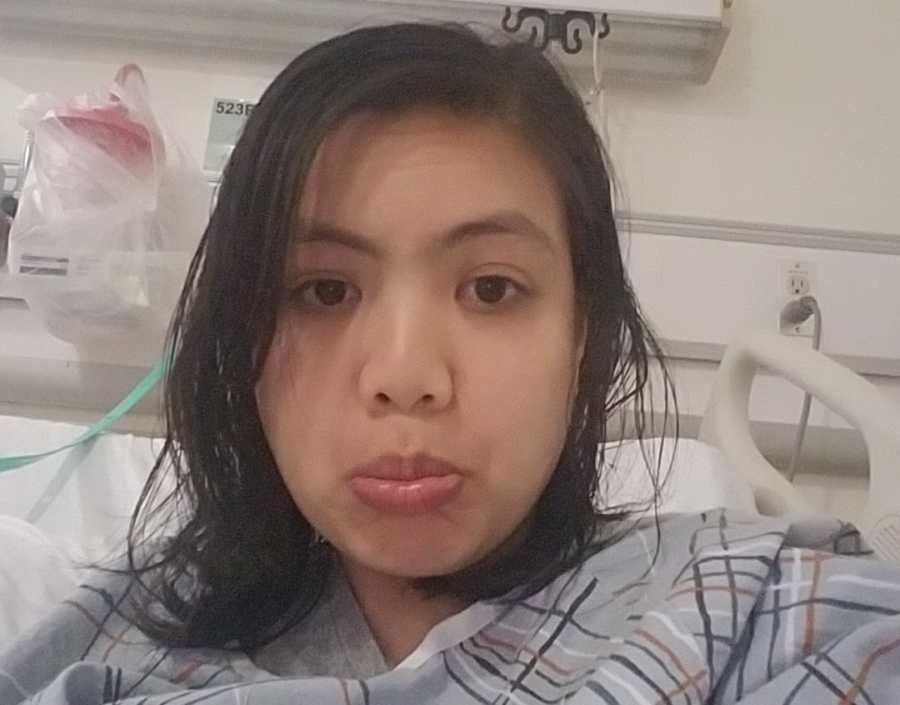
There was a lot of trial and error in the beginning as to what medications would work for my body. With an autoimmune disease, it’s not a one size fits all prescription. What may work for me might not work for someone else. They told me the most common medications for patients with lupus are Plaquenil and prednisone, and that was what I was going to try first. Luckily, I could see a difference in a matter of days. My legs and feet were no longer swollen and I could actually fit into my own shoes.
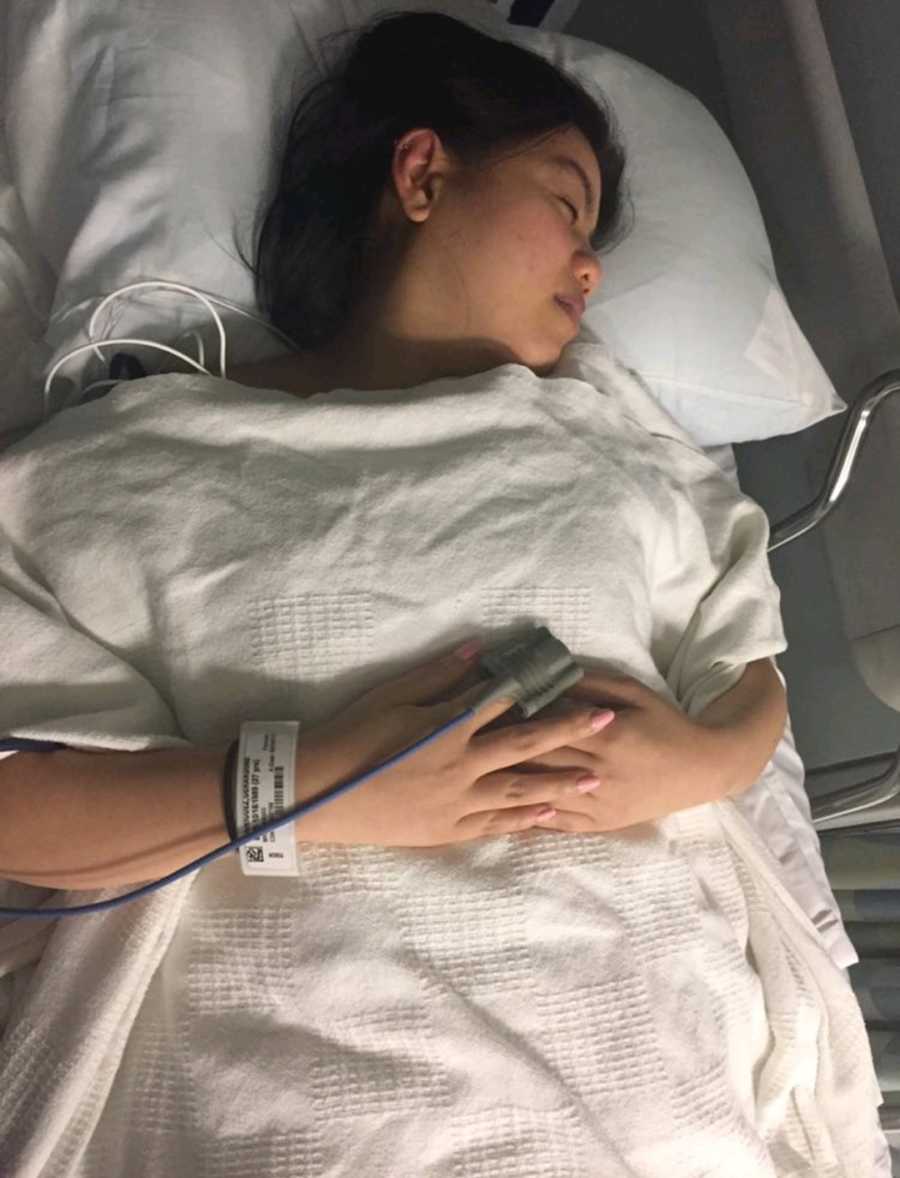
I had a vacation trip planned to go to the Philippines with my family at the end of August. My doctors were a bit weary of me going on a plane for that long, but eventually, I got the okay. My family and I took all the precautions that were advised. I had to take my medications and eat healthier so I had to incorporate smoothies and tofu into my diet, which I hated. I needed to rest and I also needed to stay out of the sun as much as possible. With lupus, the sun was one of my triggers for a flare. When I returned back home, I would do labs again.
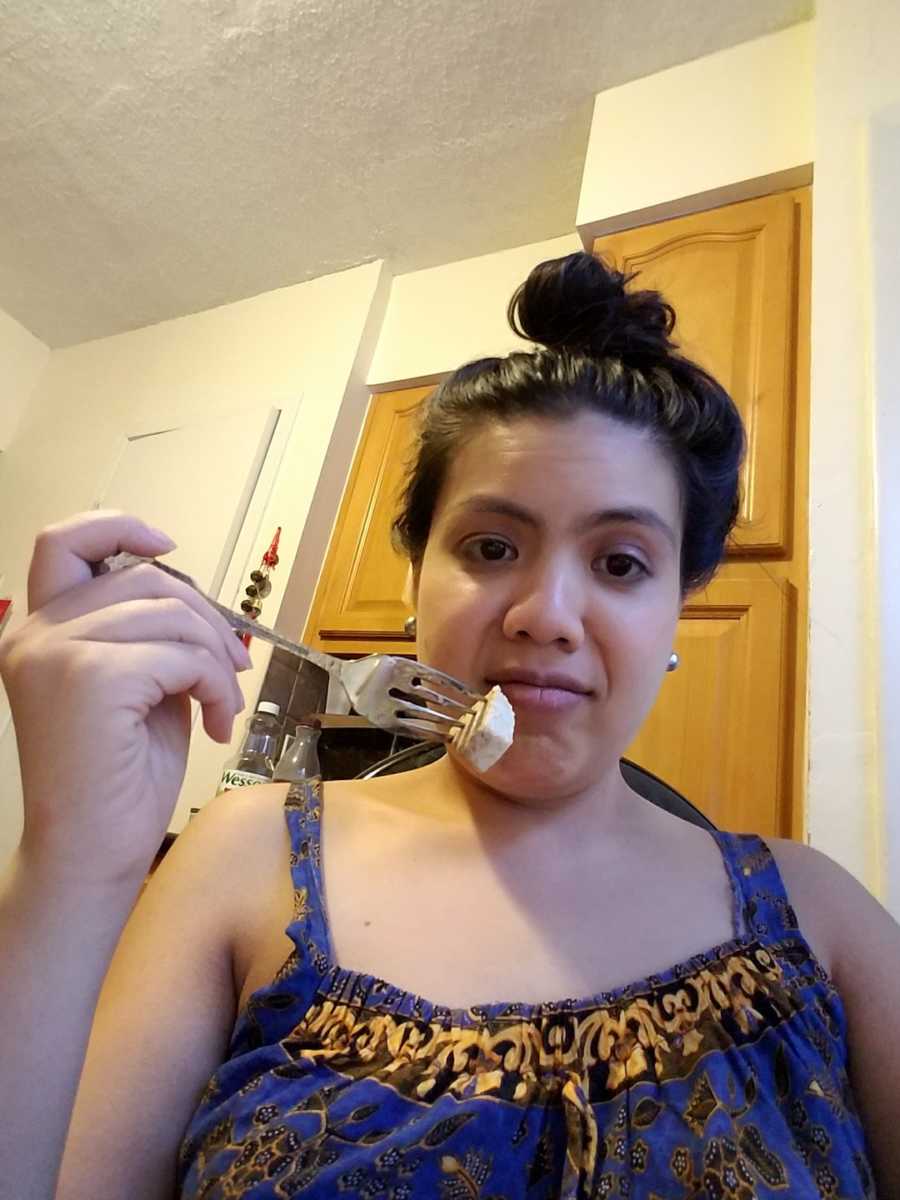
When I came back, my nephrologists informed me I was still leaking protein in my urine and scheduled a kidney biopsy. I was super scared. I had never needed to go to the hospital and didn’t know what to expect. I was thankful for the medical team because they made the process very easy. The procedure took about 20 minutes and then I was sent to an outpatient room where I had to stay for 4 hours for observation. Thankfully, there was no complication and I was able to go home that same day. The results of the biopsy were classified as a Mesangial proliferative LN (class II). My nephrologists said because we caught it early, the damage to my kidneys was not as severe, but it was also not reversible. The scarring on my kidneys would be there for life. I was elated and sad at the same time when I got the results.
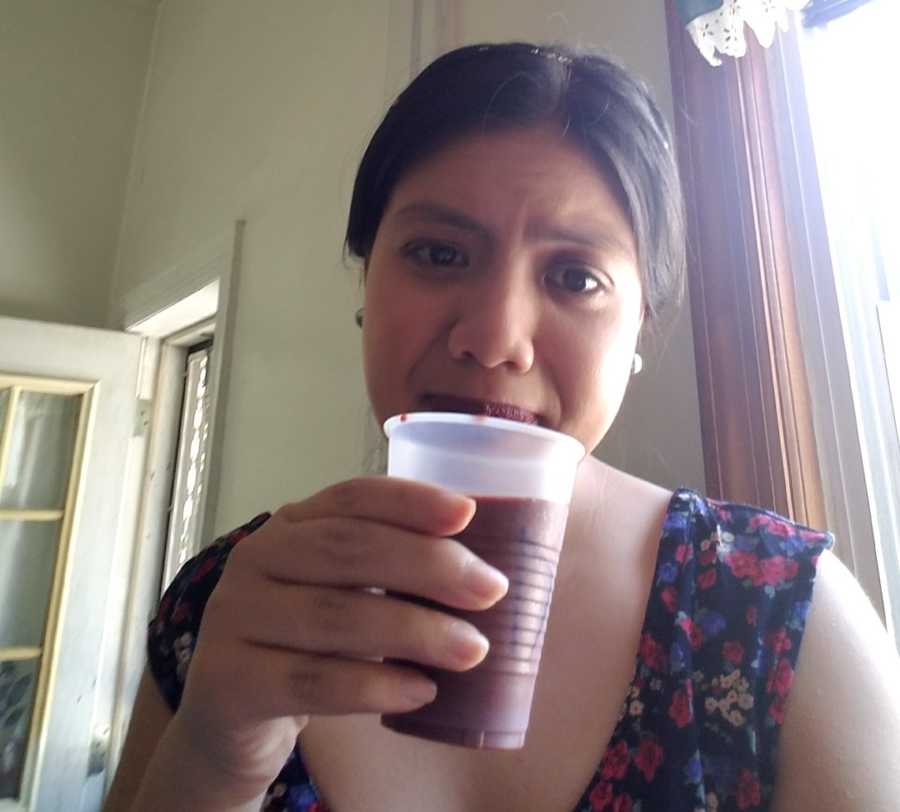
By the end of the 3 months, my legs and feet never became swollen again and my joints weren’t hurting anymore. I still had shortness of breath and the sharp chest pains were still there. But they weren’t as severe. My blood work still was abnormal and my urine still had protein leaking so my rheumatologists added on another medication called Cellcept. A few days after I started this new medication, I started to become sick. I had severe headaches and I was starting to get a fever. I informed my rheumatologists and he told me to take Tylenol. After taking Tylenol I felt better, but then the headache and fever came back. My doctor informed me if I still feeling sick by day three, I should head to the emergency room. I decided maybe I just needed to rest some more and drink more tea. Maybe that would me feel better. My doctor thought it might also be a reaction to the new medication and to stop it. But day three came and I started to get chills and my temperature kept rising.

My boyfriend insisted I go to the Emergency Room now. It was crowded and it took hours before I was even seen by a doctor. They took my vitals, I did a chest x-ray and lab work (blood and urine). I had informed them about my lupus, but they weren’t able to come up with anything conclusive and wanted me to stay the night since my fever wasn’t going away. It wasn’t till the second day I got a CT scan that they determined I had pneumonia. Based on my CT scans, the fluid around my lungs and heart had increased. I ended up staying in the hospital for 5 days and was on antibiotics. Once I was better, I restarted Cellcept, prednisone, and Plaquenil. The prednisone really seemed to help because on my next CT scan 3 months later, I was showing improvement. But protein was still leaking so my nephrologists added another medication called losartan. At one point, I was taking 14 pills a day. I had to get them in pill organizers or else I would just forget.
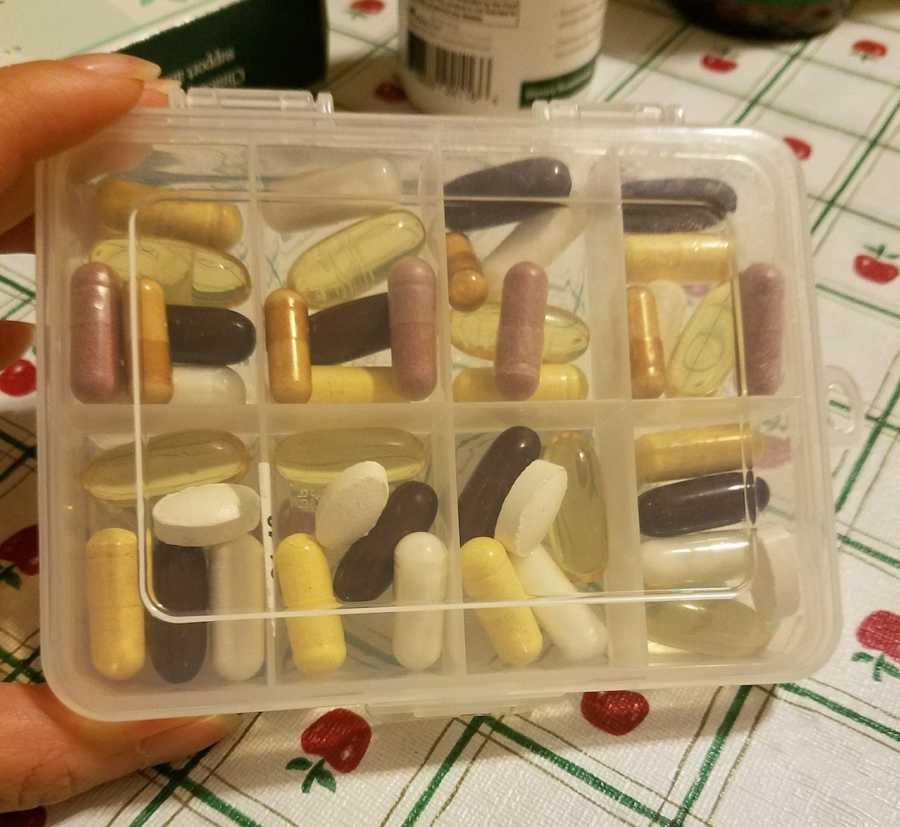
Eventually, I was able to wean off prednisone completely. I had gained about 20 pounds on it, but overall, the medications seemed to be working. I no longer had protein leaking in my urine, I no longer felt any joint pain, didn’t have any shortness of breath, etc. But my labs were still not normal. I also still felt very tired from time to time. I also noticed I super sensitive to the sun and the brain fog was just the worse. My rheumatologists explained I had pretty much plateaued and this I guess was ‘my’ normal.

Since I had been consistent with my meds and my test results were considered ‘my’ normal, I asked my doctor about the possibility of stopping Cellcept and losartan. I’m now 31, engaged, and thoughts of having a family of my own are on my mind. Cellcept and losartan are a big NO if planning to get pregnant or if pregnant. I decided this was the best time to discuss my options. I got the okay to start tapering down and my doctors have been monitoring me carefully. I am hoping to completely stop Cellcept and losartan. If there are any issues and I go above ‘my’ normal, Imuran will be added which is safe for pregnancy. With lupus, I know there could be so many ups and down and I have also mentally prepared myself for the worst-case scenario. If I am unable to have a child of my own, adoption is always in the cards.
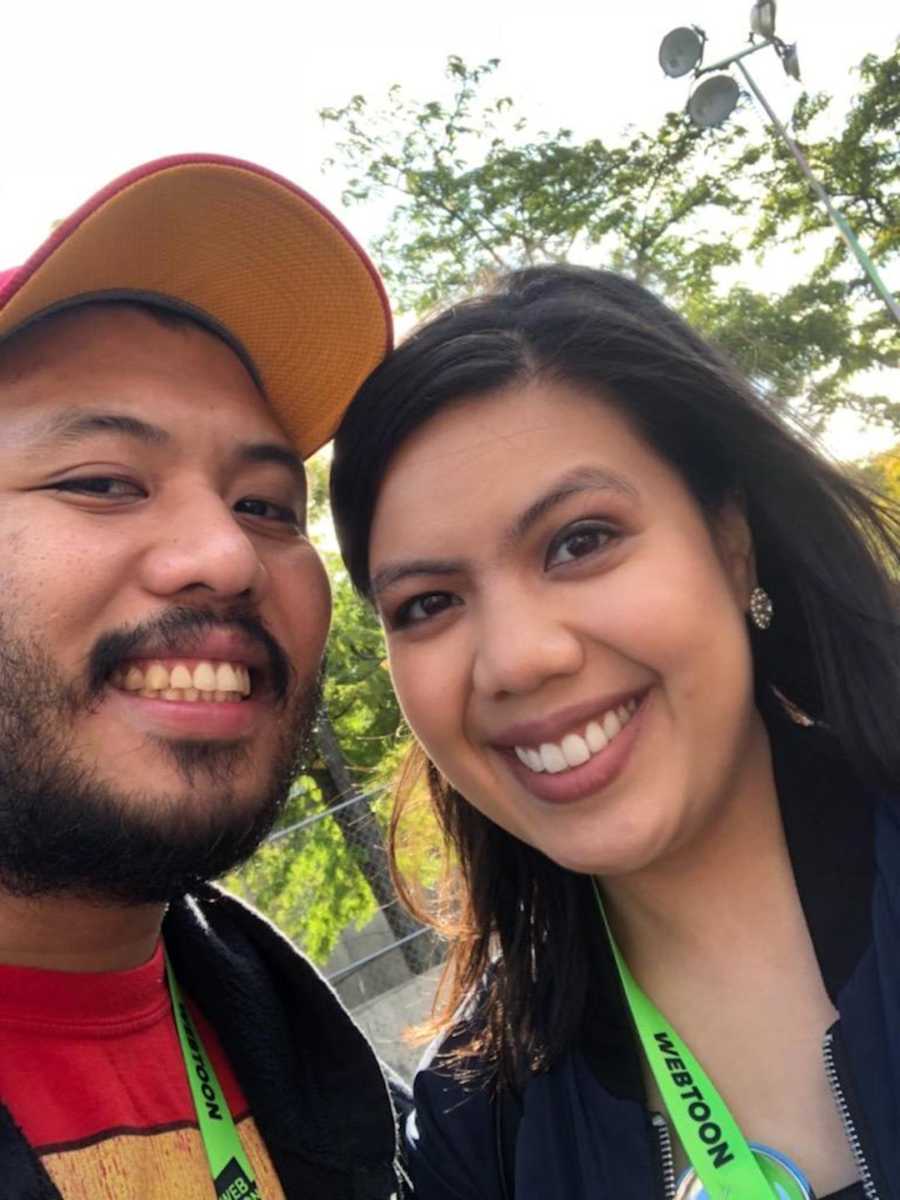
July of 2021 will mark my fourth year as a lupus warrior. It has been a whirlwind of an adventure. Never in a million years would I think any of this would have happened to me. But, everything happens for a reason and I have adapted to it. Lupus has affected my heart, lungs, and kidneys. It has also affected my weight, my memory, my hair, skin, diet, and my overall day-to-day activities. I was wearing masks on the trains even before COVID was here. My immune system is very fragile so any infection could send me to the hospital just. It definitely is a hard journey to endure but with the right medical team and support system, it is possible.
Social media has also been a great avenue to meet other warriors who have lupus or other autoimmune diseases. When I first got newly diagnosed, I joined a few Facebook groups and asked a bunch of questions, and loved reading other people’s experiences. It was great knowing I wasn’t alone. As much as I love my family and friends, I sometimes felt I couldn’t be 100% with them. They were healthy and I didn’t feel they could really relate to what I was going through. My fatigue is not the same as their fatigue. They weren’t experiencing brain fog and taking so many pills a day. Even though these people online were strangers, I still felt very connected to them. I think that’s why I started my blog and Instagram page. I was at a stage now in my life where I fully accepted my diagnosis and wanted to embrace and interact and share my story with as many people as I could.”
